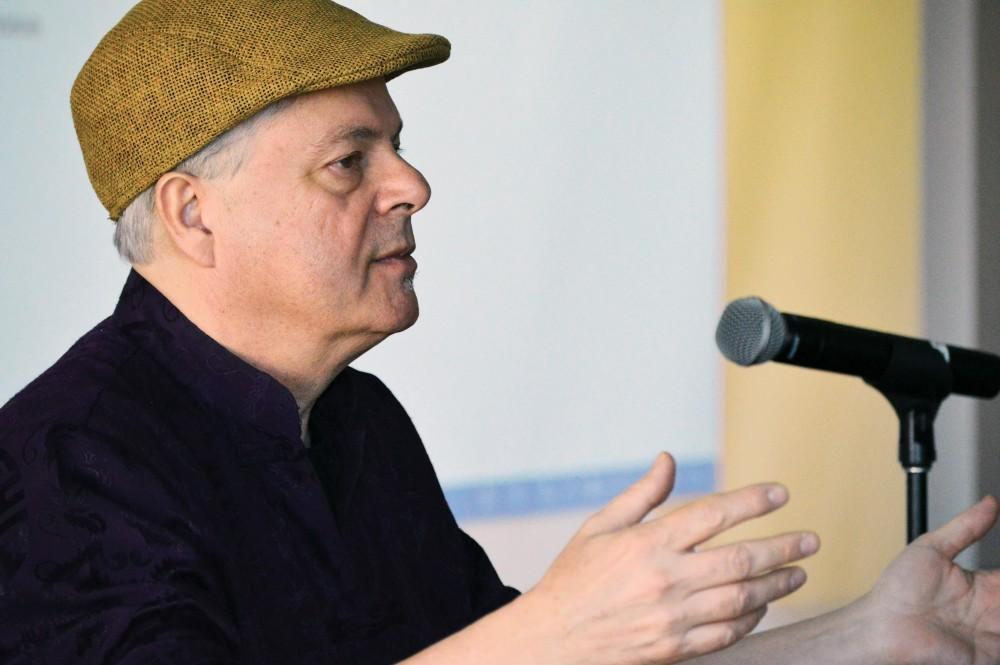Ethnomusicologist discusses importance of Dominican music and dance

Mar 2, 2017
Dancing has always been a form of expression. For people in the Dominican Republic, dance is a crucial part of their culture. Paul Austerlitz, an ethnomusicologist, visited Grand Valley State University to talk about why this is.
The event, “Music, Race and Identity in the Dominican Republic,” took place Monday, Feb. 27, in the Kirkhof Center. The event, which was co-sponsored by GVSU’s Latin American and Latino/a studies and the department of music and dance, was attended by roughly 120 people, who gathered to listen to the rich history of Dominican music and dance.
“Music and dance are the counter narratives to verbal discourse,” Austerlitz said.
Austerlitz talked about the history of struggles and strife that the Dominican Republic has endured. He highlighted Rafael Trujillo, who was a dictator in the Dominican Republic, and the importance of merengue, an upbeat style of dance. Trujillo was influential in promoting merengue as a key contribution of the Dominican Republic to the world at large. After Trujillo’s death, the Dominican Republic continued to use the combination of upbeat music with vibrant song lyrics about love, the verdant countryside and “living the good life.”
“Merengue is a Dominican style of music,” said Carl Wilson, a GVSU student and lover of music. “It will always exist as something more for those people.”
Austerlitz spoke about the importance of dance in different cultures. In Haiti, people have combined beliefs from a multitude of religions for years. Austerlitz used the term “syncretism” to explain the African roots in many practices.
Dancing changes your consciousness, Austerlitz said. He showed the crowd a video of Palos drums being played as part of a religious ritual. The Palos called upon spirits to come down and fill the bodies of the dancers, who would have no recollection of the event afterward. This practice was the result of the syncretism of Catholicism and beliefs about African spirits. Austerlitz used this example to show how important dance and music is to different cultures.
The history of the Dominican Republic was the focus of discussion for the majority of the event. The Dominican Republic has experienced colonization, dictators and poverty. The one thing that has been with the Dominican people through it all is music and dance, Austerlitz said. Music, dance and rituals are purveyors to colonial thinking, Austerlitz said.
Austerlitz said the victors write history, and this is why music is important. Music, dance and rituals are still there for people to participate in through it all, he said. He elaborated on how merengue is a mix of European and African cultures because of the people keeping it alive.
“Music and dance are powerful,” Austerlitz said. “Think in your own lives about whatever you’re listening to, (associations) music has with ideas like musing someone you’re in love with. Music has those powers.”
After the event concluded, participants were encouraged to visit the Glenn A. Niemeyer Learning and Living Center. There, guests were treated to a buffet-style set of Dominican dishes, and participants had the opportunity to listen to merengue, dance and speak Spanish.






















